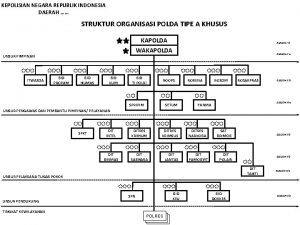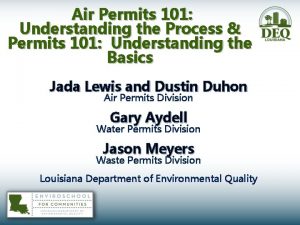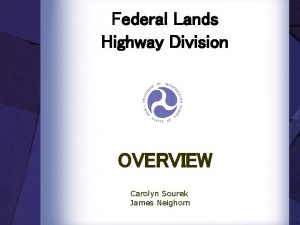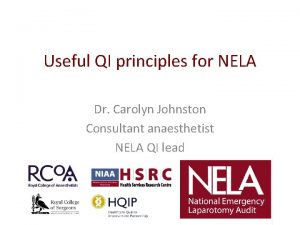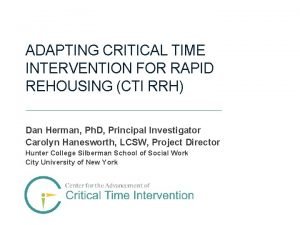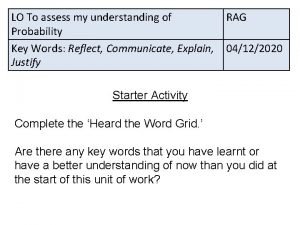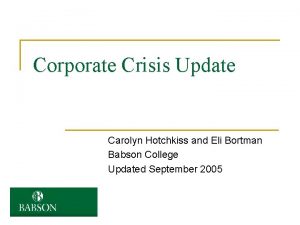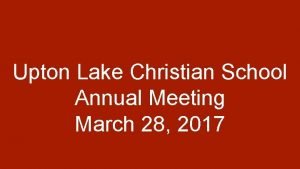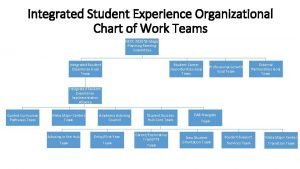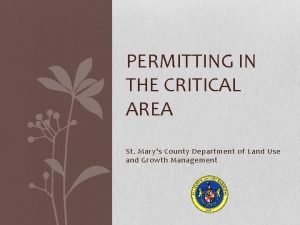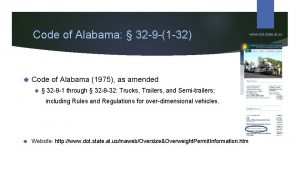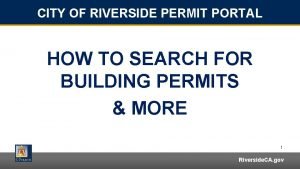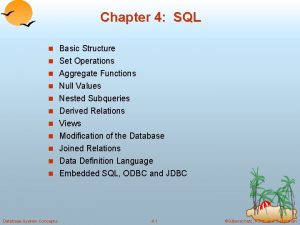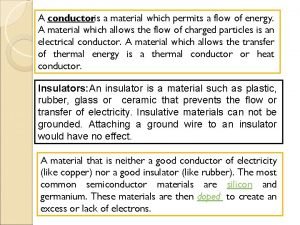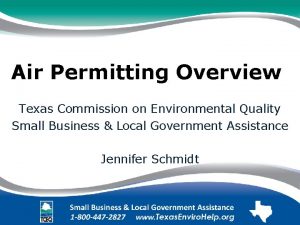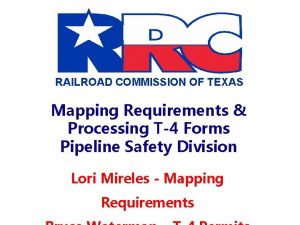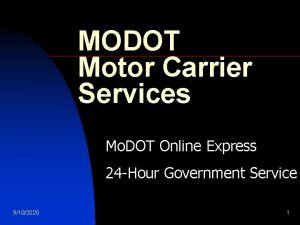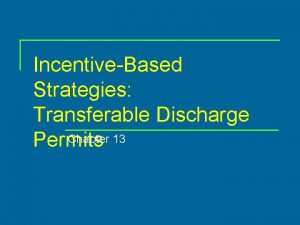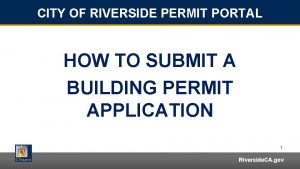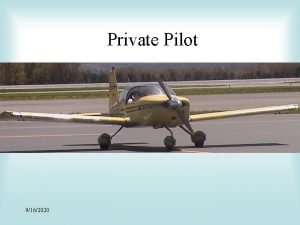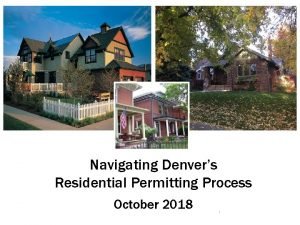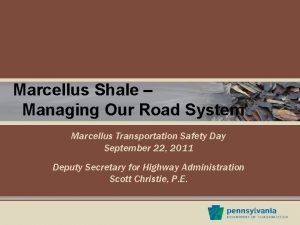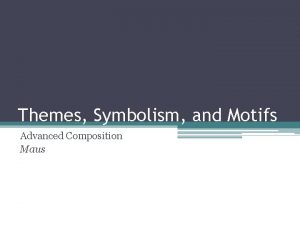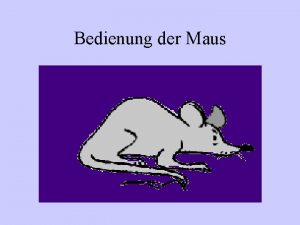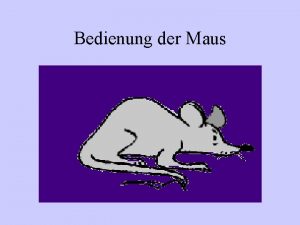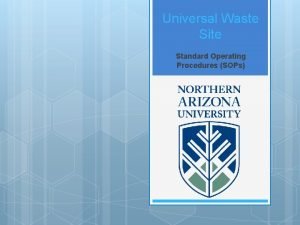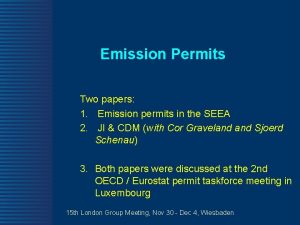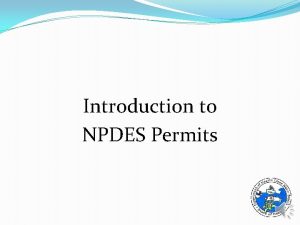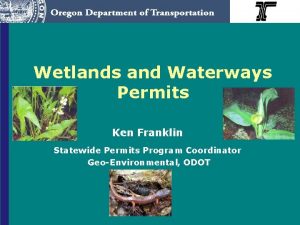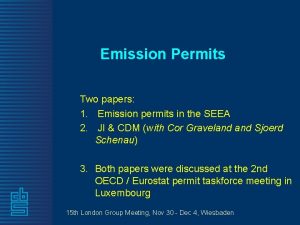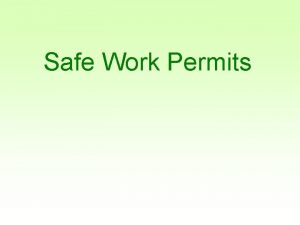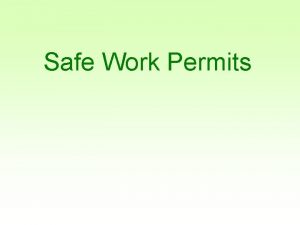Title V Site Operating Permits SOPs Carolyn Maus






































![Submitting Updates to Applications Under Review [Name of Assigned Permit Reviewer] TCEQ Air Permits Submitting Updates to Applications Under Review [Name of Assigned Permit Reviewer] TCEQ Air Permits](https://slidetodoc.com/presentation_image_h/20dd35369d4335318782d1b117e80edf/image-39.jpg)


- Slides: 41

Title V Site Operating Permits (SOPs) Carolyn Maus, P. E. Air Permits Division Texas Commission on Environmental Quality Environmental Trade Fair 2015

Why Title V? Overview • Why Title V? How is the initial application reviewed? • What are the other application types? • Is there public input? • How is EPA involved? Is there public input? How is EPA involved?

Why Title V? • Why Title V? Overview

Why Title V? • Major source • Affected source category Title V Major permit source needed Affected source category

Overview • How is the initial application reviewed?

Initial Application Basic Info. • Due before site operation begins or 12 months after TCEQ/EPA action • All site-wide and unit requirements • Public notice and EPA review

Initial Application What’s in it? • Area map, plot plan, process information • Forms with detailed site information • PM/CAM • Compliance status • Certification

Initial Application Preliminary Review • Completeness • Company and Site Information Completeness • Site Operations Company/Site • Introduction to Info. applicant Site Operations Introduction

Initial Application Technical Review • 30 TAC Chapter 106/116 permits • Major NSR Summary Table: § PSD/NA permits § Emission points in the MAERT § Monitoring/testing, recordkeeping, reporting

Initial Application Major NSR Summary Table AIR CONTAMINANTS DATA Emission Point No. (1) TK-1 Source Name (2) Tank Air Contaminant Name (3) VOC Contents of current MAERT Emission Rates * Monitoring and Testing Requirements Recordkeeping Requirements Reporting Requirements lb/hr TPY** Special Condition 2. 5 0. 24 5, 6 5, 7, 8 Special Condition numbers with requirements for the EPN

Initial Application Technical Review Site-wide requirements • OP-REQ 1 Unit-specific requirements • OP-SUM • OP-UA Negative applicability • OP-REQ 2

Initial Application Negative Applicability Lacks information Shows that all exemption criteria are met

Initial Application More Technical Review Compliance PM/CAM • OP-ACPS • Compliance History Review • OP-MON

Initial Application Periodic Monitoring • Does the rule contain sufficient monitoring? • Does it have sufficient monitoring frequency? • If you answered No at least once, you’ll need PM.

Initial Application Compliance Assurance Monitoring • Subject to an emission limitation or standard; • Using a control device; and Emission Control Pre-control ≥ • Pre-control emissions ≥ major source threshold Limit Device major CAM applies!

Initial Application Resolving Deficiencies The permit reviewer will: • Send a list of deficiencies • Review applicant responses • Request additional information if needed

Initial Application Working Draft Permit The applicant will: • Submit comments within 30 days • Legibly mark changes on forms or draft • Clearly indicate new, revised, and deleted data • Certify updates prior to public notice

Overview • What are the other application types?

Overview • Application types - SOP renewals SOP Renewals

SOP Renewal Timeline TCEQ sends renewal notification Permit issued Application due (6 -18 months before expiration) Five year permit term (unless otherwise noted) Permit expiration

SOP Renewal Application • Update all requirements • Evaluate PM/CAM for all units • Certify compliance status • Public notice and EPA review

Overview • Application types – SOP revisions and notifications SOP Revisions and Notifications

SOP Revisions and Notifications • Reviewed by: § TCEQ § EPA § The public • Purpose is to maintain current applicable requirements

Notifications • What is a notification? What is a a notification? • Can ICan use Iause notification? • When should I submit my notification?

Notification Types Off-permit changes: • Add applicable requirements from site changes • New unit • New PBR/standard permit Off-permit changes • Add applicable requirements from site changes • New unit • New PBR/standard permit Operational flexibility: • Remove unit • Modify applicable requirements • Decrease NSR emission limits. Operational flexibility • Remove unit • Modify applicable requirements • Decrease NSR emission limits

SOP Revisions Types • Administrative • Minor • Significant

SOP Revisions Application • Describe each change • Identify affected emission units • Use appropriate TCEQ forms

Administrative Revision Whatchanges? • What qualify for this revision type? § 30 TAC § 122. 211 • Whenisisit itdue? § No later than 30 days after the permit anniversary 30 days after anniversary • Procedures? § Procedures? Can operate the change before revision issuance § No public notice or EPA review Operate before issuance; No public notice/EPA review

Minor Revision Whatchanges? • What qualify for this revision 30 TAC § 122. 215 type? § 30 TAC When is it§ 122. 215 due? • When is it due? Before operation § Before operating the change Procedures? • Procedures? § Can operate the change before revision Operate before issuance; issuance Public announcement/EPA review § Public announcement/EPA review

Significant Revision Whatchanges? • What qualify for this revision type? § 30 TAC § 122. 219 • When is is it due? § Before operating the change Before operation • Procedures? § Cannot operate change until revision is issued § Public notice/EPA review Operate after issuance; Public notice/EPA review

Overview • Is there public input?

Public Notice Publish • Applicant must: Notice § § Post Signs Publish notice Post signs Applicant Make permit documents available for viewing Tasks Submit public notice documents to TCEQ Public Viewing Submit Forms

Public Announcement • TCEQ publishes announcement online • TCEQ posts documents online

Overview • How is EPA involved?

EPA Review • 45 -day review period • Concurrent with public notice/announcement • Stops if comments are received: § Begins again after comments are addressed

Final State Action After EPA review: • TCEQ issues permit • 60 -day public petition period: § EPA may receive valid petition § TCEQ resolves objections § Permit may be modified

Guidance • TCEQ Memos • Additional FOP Guidance

Submitting Applications to TCEQ APIRT, MC 161 P. O. Box 13087 Austin, TX 78711 -3087 Mail a copy of all applications to the appropriate TCEQ regional office.
![Submitting Updates to Applications Under Review Name of Assigned Permit Reviewer TCEQ Air Permits Submitting Updates to Applications Under Review [Name of Assigned Permit Reviewer] TCEQ Air Permits](https://slidetodoc.com/presentation_image_h/20dd35369d4335318782d1b117e80edf/image-39.jpg)
Submitting Updates to Applications Under Review [Name of Assigned Permit Reviewer] TCEQ Air Permits Division, MC 163 P. O. Box 13087 Austin, TX 78711 -3087 Mail a copy of all updates to the appropriate TCEQ regional office.

Submitting Info. to EPA Region 6 Air Permits Section (6 PD-R) EPA, Region 6 1445 Ross Avenue, Suite 1200 Dallas, Texas 75202 -2733 • Send all applications on a CD • Send all application updates to: R 6 Air. Permits@EPA. gov • Identify the permit number

Questions? Air Permits Division (512) 239 -1250
 Organisasi polri di tingkat kabupaten adalah
Organisasi polri di tingkat kabupaten adalah Understanding air permits
Understanding air permits Hot site cold site warm site disaster recovery
Hot site cold site warm site disaster recovery Carolyn mendiola
Carolyn mendiola Carolyn boroden
Carolyn boroden How to tell the wild animals
How to tell the wild animals Carolyn sourek
Carolyn sourek Carolyn talbot
Carolyn talbot Carolyn johnston md
Carolyn johnston md Carolyn shread
Carolyn shread Carolyn graham jazz chants
Carolyn graham jazz chants Carolyn hanesworth
Carolyn hanesworth Stury
Stury Carolyn marano
Carolyn marano Carolyn brownawell
Carolyn brownawell Carolyn maull
Carolyn maull Yvonne has 10 tulip bulbs in a bag
Yvonne has 10 tulip bulbs in a bag Carolyn ells
Carolyn ells Carolyn hotchkiss
Carolyn hotchkiss Upton lake christian school
Upton lake christian school Carolyn washburn
Carolyn washburn Carolyn cherry
Carolyn cherry Carolyn knoepfler
Carolyn knoepfler Carolyn saxby facts
Carolyn saxby facts St mary's county tree removal permit
St mary's county tree removal permit If time permits quotes
If time permits quotes Alabama superload permits
Alabama superload permits Riverside permit search
Riverside permit search Basic structure of sql
Basic structure of sql The material that permits the flow of electricity
The material that permits the flow of electricity Tceq de minimis list
Tceq de minimis list Texas railroad commission pipeline permits
Texas railroad commission pipeline permits Modot carrier services
Modot carrier services Types of transferable discharge permits
Types of transferable discharge permits Riverside permit
Riverside permit What exception if any permits a private pilot
What exception if any permits a private pilot Denver quick permits
Denver quick permits Apras permits
Apras permits Completing reports and proposals
Completing reports and proposals Title title
Title title Maus theme
Maus theme Maus themes and symbols
Maus themes and symbols
